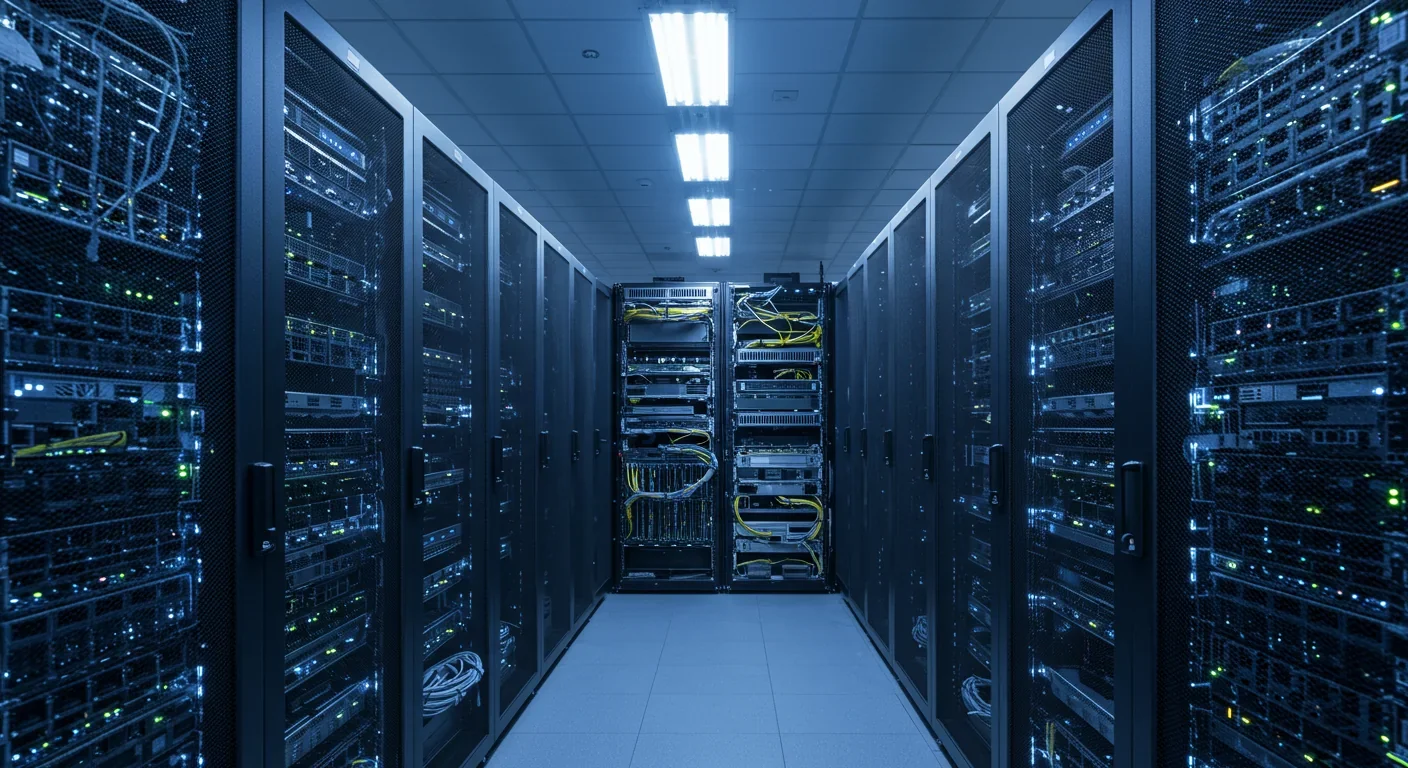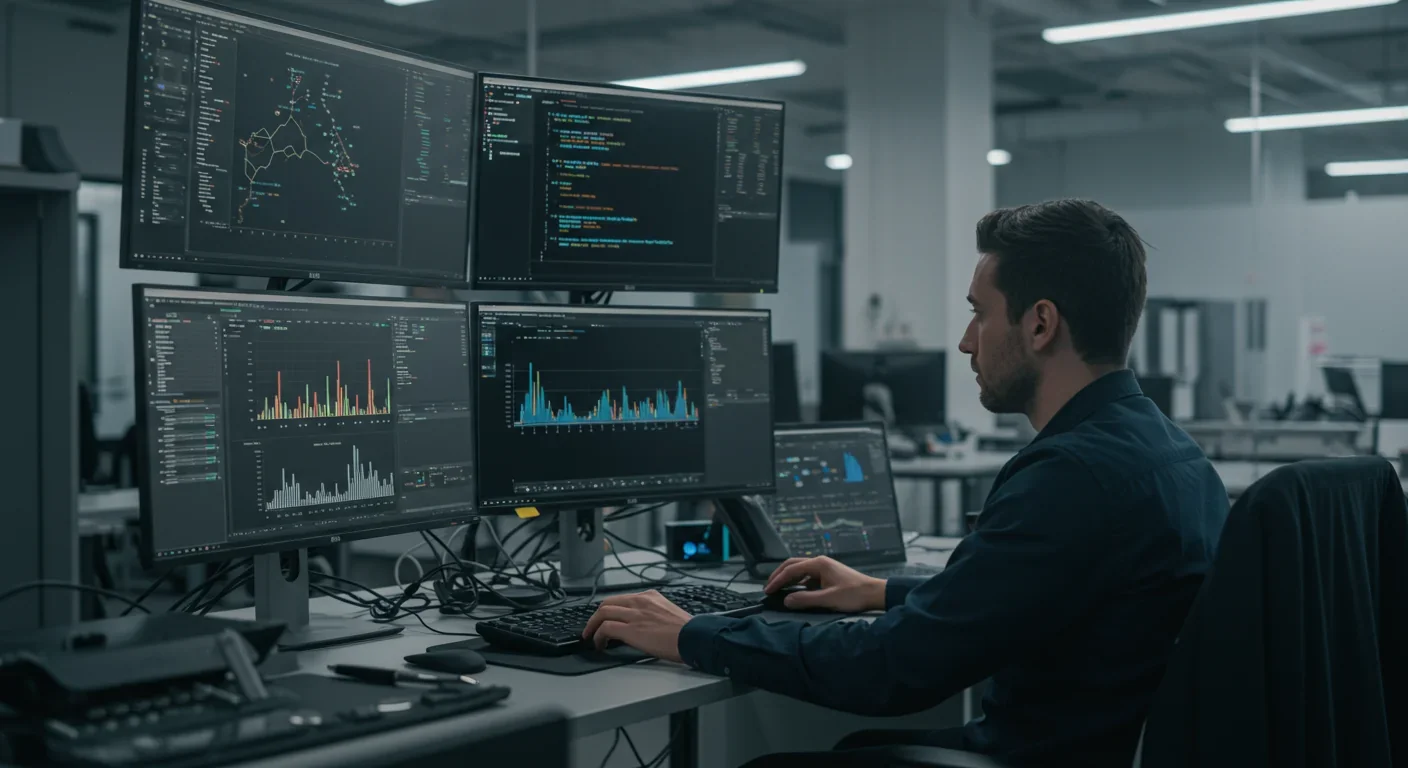Zero-Trust Security Revolution: Verify Everything Always

TL;DR: TPUs and GPUs represent fundamentally different approaches to AI acceleration: Google's TPUs excel at inference and energy efficiency for specific workloads, while NVIDIA's GPUs dominate through ecosystem maturity and flexibility. The choice depends on scale, vendor lock-in tolerance, and workload characteristics rather than raw performance alone.

By 2030, the global AI chip market will exceed $300 billion, and the choice between TPUs and GPUs will determine who leads and who follows. Right now, tech giants are making billion-dollar bets on silicon architectures that will shape the next decade of innovation. Google built its own chips because GPUs weren't enough. NVIDIA responded by making GPUs smarter. And somewhere in this clash of titans, your next AI project hangs in the balance.
This isn't just about hardware specs. It's about fundamentally different philosophies for accelerating intelligence itself.
GPUs were born to render video game graphics, then discovered a second life powering neural networks. They're massively parallel processors packed with thousands of small cores, each capable of handling independent calculations simultaneously. Think of a GPU as a sprawling factory floor where thousands of workers handle different tasks concurrently.
TPUs, by contrast, were purpose-built for machine learning from day one. Google unveiled the first TPU in 2016, designed exclusively to accelerate TensorFlow operations with ruthless efficiency. At their core lies the systolic array, a grid of processing elements that passes data through in rhythmic waves, like a perfectly choreographed assembly line optimized for matrix multiplication.
The architectural differences run deep. GPUs use a memory hierarchy with multiple cache levels, giving programmers fine-grained control over data flow. TPUs rely on high-bandwidth memory directly connected to processing units, prioritizing throughput over flexibility. GPUs handle 32-bit floating-point arithmetic with ease. TPUs aggressively use bfloat16 precision, trading some numerical accuracy for dramatic speed gains in deep learning tasks.
When it comes to raw training throughput, the answer depends entirely on your workload. For large-scale transformer models like GPT or BERT, TPUs often dominate. Google's latest Ironwood TPU delivers 459 TOPS (trillions of operations per second) for inference, optimized specifically for the attention mechanisms that power modern language models.
But GPUs aren't standing still. NVIDIA's H100 chips push 4,000 teraFLOPS of AI performance using specialized Tensor Cores, while offering broader compatibility across frameworks. Recent IEEE benchmarks show both architectures achieving comparable training speeds on similar budgets, though through radically different optimization strategies.
The real performance gap emerges in specific scenarios. Convolutional neural networks for image recognition typically run 15-30% faster on TPUs because their matrix operations align perfectly with systolic array architectures. Recurrent networks and reinforcement learning tasks with irregular computation patterns favor GPUs' flexibility. And for inference at massive scale, Google's TPUs maintain an edge because they were designed precisely for that use case.
Memory bandwidth tells another story. GPUs typically feature 256-512 GB/s of bandwidth, while TPU v5e chips reach 1.6 TB/s through their custom interconnects. When you're feeding billions of parameters into a model, that bandwidth difference translates directly into training time.
Here's where things get interesting. Cloud TPUs on Google Cloud Platform start around $1.35 per hour for a v5e TPU, while comparable NVIDIA A100 instances run $2.21-$3.67 per hour depending on provider and region. For inference workloads processing millions of requests daily, those differences compound quickly.
But raw rental costs don't tell the full story. TPUs achieve better energy efficiency per operation for specific workloads, often delivering 2-3x more inferences per watt compared to GPUs. When you're running AI at Google or Meta's scale, energy costs dwarf hardware expenses. A data center running 10,000 accelerators at 300 watts each consumes 3 megawatts continuously, enough to power 2,000 homes.
NVIDIA's advantage lies in the secondary market and flexibility. You can buy used A100s, rent spot instances at steep discounts, or deploy on-premise infrastructure that retains resale value. TPUs exist exclusively in Google's cloud ecosystem, creating vendor lock-in that makes some enterprises nervous. As one infrastructure engineer noted, "Choosing TPUs is like choosing a zeppelin over a jumbo jet – impressive engineering, but you're locked into one airline."
The total cost of ownership calculation gets even murkier when you factor in developer productivity. Training a model might cost $50,000 in compute resources but $500,000 in engineering salaries. If your team loses weeks wrestling with TPU-specific optimizations instead of building features, the cheaper hourly rate becomes expensive.

This is where NVIDIA's decade-long head start becomes brutally apparent. CUDA isn't just a programming framework – it's an entire empire of tools, libraries, and developer knowledge that has become the de facto standard for GPU computing. Need to optimize a custom kernel? There's a CUDA tutorial. Debugging memory issues? Stack Overflow has 50,000 answers.
PyTorch and TensorFlow both support GPUs out of the box with mature, battle-tested implementations. TPU support exists, but it's less polished. Google's JAX framework offers exceptional TPU performance, but requires rethinking your entire codebase around functional programming principles. As one researcher asked on Reddit, "Has torch.compile killed the case for JAX?" – a question that wouldn't exist if TPU support were seamless.
Google's XLA (Accelerated Linear Algebra) compiler can optimize TensorFlow and JAX code for TPUs automatically, sometimes achieving 2-3x speedups without code changes. But it's another abstraction layer to understand, another potential source of bugs, another dependency in your stack.
The ecosystem divide creates a chicken-and-egg problem. Fewer developers use TPUs, so fewer tools get built for TPUs, so fewer developers choose them. NVIDIA actively invests hundreds of millions annually in developer relations, creating libraries like DeepSpeed and cuDNN that make GPU optimization almost automatic.
Google obviously runs its entire AI infrastructure on TPUs – Gmail's Smart Compose, Google Translate, and Search ranking all depend on TPU farms. They've reportedly deployed over a million TPU cores globally, processing trillions of inferences daily. For them, vertical integration makes perfect sense.
But here's the twist: even Google uses GPUs for research. Why? Because researchers want to share code with the broader community, and that community uses PyTorch on NVIDIA GPUs. Academic labs can't afford to maintain parallel codebases for different hardware.
Autonomous vehicle companies largely bet on GPUs because they need real-time inference on edge devices, and NVIDIA's embedded platforms like Jetson integrate seamlessly with their cloud training infrastructure. Tesla built its own Dojo chips, but still relies heavily on NVIDIA hardware for development.
Conversely, companies doing massive-scale NLP in the cloud often choose TPUs. The economics work when you're processing millions of translation requests or running continuous model training. Startup costs are lower because you avoid upfront hardware purchases, and Google's recent Ironwood TPUs specifically target inference, historically a GPU stronghold.
Here's what nobody talks about enough: AI's energy consumption is spiraling out of control. Training GPT-3 consumed an estimated 1,287 MWh of electricity, equivalent to the annual consumption of 120 homes. As models grow larger and more complex, this trend accelerates exponentially.
TPUs' energy efficiency advantage becomes strategically critical in this context. Recent MLPerf benchmarks show TPUs delivering up to 2.7x better performance-per-watt on specific workloads. When Ireland's data centers already consume 18% of the country's electricity, and AI workloads keep doubling annually, efficiency isn't just about cost – it's about whether the power grid can sustain AI growth at all.
NVIDIA argues that accelerated computing fundamentally reduces energy use compared to running the same workloads on CPUs, and they're right. But as AI becomes ubiquitous, the question shifts from "GPUs versus CPUs" to "which accelerator architecture can scale sustainably?"
This creates pressure for both architectural convergence and specialization. Future chips will likely incorporate domain-specific accelerators for different AI tasks, much like modern CPUs include specialized instructions for encryption and video decoding.

So which should you choose? The honest answer: it depends on factors most blog posts ignore.
If you're a startup building on standard architectures and need maximum flexibility, GPUs make sense. The ecosystem maturity means faster iteration and easier hiring. If you're processing massive inference workloads in Google Cloud and can invest in TPU-specific optimization, the cost savings compound quickly.
Research teams need GPUs for compatibility and community. Production systems running standardized models can benefit from TPU efficiency. Hybrid approaches increasingly make sense, as demonstrated by companies that train on GPUs and deploy on TPUs, or vice versa.
The decision tree really boils down to: How custom is your architecture? How much scale are you running at? Can you tolerate vendor lock-in? What's your team's existing expertise?
The TPU versus GPU debate is already becoming obsolete in certain ways. Both architectures are evolving toward mixed-precision computing, sparsity optimization, and specialized units for transformer attention mechanisms. The differences that matter today may dissolve tomorrow.
Google recently announced developments in photonic computing for future TPU generations, potentially achieving orders of magnitude better energy efficiency. NVIDIA is investing heavily in software abstraction layers that could make hardware specifics less relevant.
We're also seeing architectural innovations that blur the lines. Systolic arrays are appearing in GPU designs. GPU memory architectures are adopting high-bandwidth approaches from TPUs. The convergent evolution suggests that optimal AI acceleration requires combining ideas from both camps.
Within five years, we might not be choosing between TPUs and GPUs but selecting from a spectrum of specialized accelerators: inference chips, training chips, sparse model chips, and chips optimized for specific model architectures. Apple's Neural Engine, AWS's Inferentia, and Microsoft's Maia all point toward a heterogeneous future where no single architecture dominates.
The AI hardware landscape is moving too fast for permanent decisions. Cloud platforms let you experiment with both architectures at relatively low cost. Benchmark your actual workloads – don't trust vendor marketing or even independent reviews, because your specific model, data, and optimization choices create unique performance profiles.
Consider starting with GPUs for development and prototyping, then evaluating TPUs for production if you're operating at sufficient scale on Google Cloud. Maintain framework-agnostic code where possible. Measure everything: training time, inference latency, cost per prediction, energy consumption, and developer velocity.
The accelerator you choose today will shape your AI capabilities tomorrow. But it won't be your last choice. The hardware underneath AI is evolving as rapidly as the AI itself, and the teams that stay flexible will ultimately outpace those who optimize too early for any single architecture.
The race isn't really between TPUs and GPUs. It's between the rigid thinking that demands a single winner and the adaptive approach that leverages the right tool for each task. In that race, flexibility wins every time.

MOND proposes gravity changes at low accelerations, explaining galaxy rotation without dark matter. While it predicts thousands of galaxies correctly, it struggles with clusters and cosmology, keeping the dark matter debate alive.

Ultrafine pollution particles smaller than 100 nanometers can bypass the blood-brain barrier through the olfactory nerve and bloodstream, depositing in brain tissue where they trigger neuroinflammation linked to dementia and neurological disorders, yet remain completely unregulated by current air quality standards.

CAES stores excess renewable energy by compressing air in underground caverns, then releases it through turbines during peak demand. New advanced adiabatic systems achieve 70%+ efficiency, making this decades-old technology suddenly competitive for long-duration grid storage.

Our brains are hardwired to see patterns in randomness, causing the gambler's fallacy—the mistaken belief that past random events influence future probabilities. This cognitive bias costs people millions in casinos, investments, and daily decisions.

Forests operate as synchronized living systems with molecular clocks that coordinate metabolism from individual cells to entire ecosystems, creating rhythmic patterns that affect global carbon cycles and climate feedback loops.

Generation Z is the first cohort to come of age amid a polycrisis - interconnected global failures spanning climate, economy, democracy, and health. This cascading reality is fundamentally reshaping how young people think, plan their lives, and organize for change.

Zero-trust security eliminates implicit network trust by requiring continuous verification of every access request. Organizations are rapidly adopting this architecture to address cloud computing, remote work, and sophisticated threats that rendered perimeter defenses obsolete.